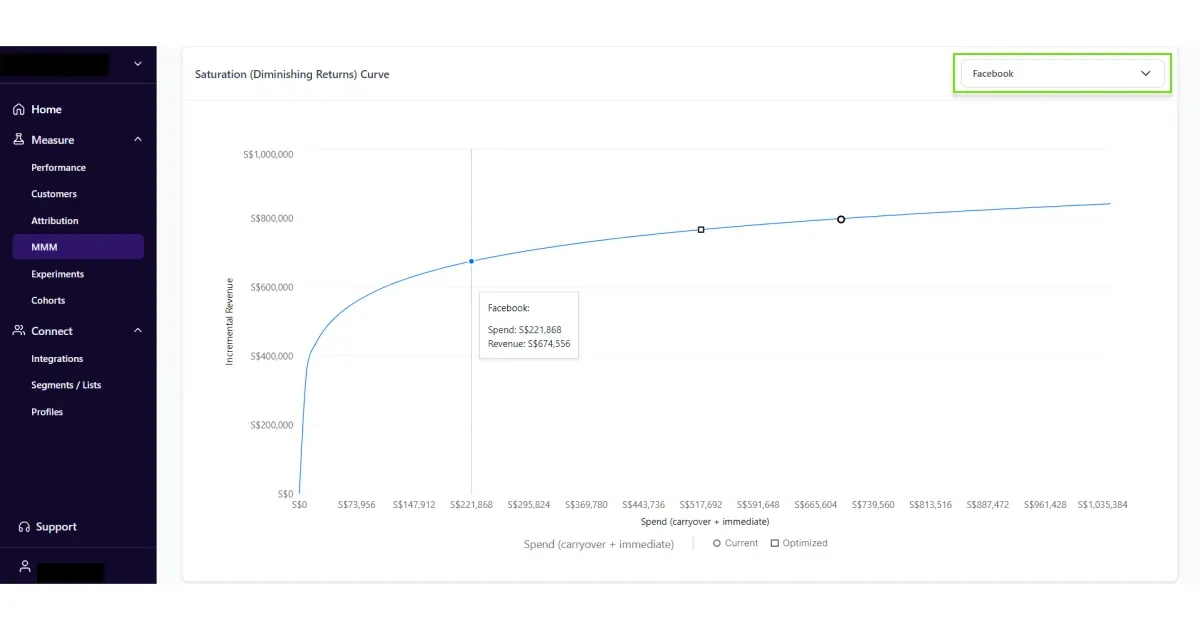We are living in possibly one of the most confusing times ever. The year passing by was dubbed to be a recession period by most analysts, and it was to some extent. However, the effects seen seem to be arising from a precautionary phase and we are yet to see the real recession.
As we head to the new year, companies specifically marketers are wondering whether they will have enough budgets to sustain and grow profitably. With the recession “yet to hit”, companies want to stick to their position of being cautious. For marketing teams, this means budget cuts.
So, how are you going to navigate this?
Understanding Why Budgets Get Cut
Before acting on what to do, it’s necessary to understand the context behind a situation. In the context of budget cuts, there are usually two recurring culprits that frequently lead to this predicament.
Poor Unit Economics
At the heart of every successful marketing strategy lies the fundamental principle of sound unit economics. When a business model falters, and the synergy between product value and pricing structure is off, it’s akin to building a house on shaky ground. As a marketer, you must recognize your role in fortifying this foundation. The age-old pillars of marketing the four Ps particularly Product and Pricing, become paramount. If acquiring and retaining customers is a costly affair due to a flawed business model, no amount of marketing wizardry can compensate.
Actionable Insight: The first step in overcoming poor unit economics is not asking for more marketing budget but addressing the root causes within the product and pricing realms.
Lack of Trust in Marketing’s Effectiveness
Marketing has evolved into an era that is inundated with analytics, data, and business intelligence tools. The fact that there is a lack of trust in marketing’s impact is perplexing. The crux often lies in the absence of scientific and statistical rigor behind marketing data, especially concerning return on investment (ROI) calculations. Despite the wealth of metrics at your disposal, the boardroom may remain skeptical about the actual business impact of marketing initiatives.
Actionable Insight: Adopt a meticulous approach to measuring success, aligning with executive goals, and showcasing how marketing activities contribute meaningfully to key business outcomes.
Strategically Planning for Budget Cuts
As a marketing leader, anticipating budget cuts necessitates a proactive approach rooted in clear goals and key metrics that resonate at the executive level. A strategic roadmap not only aligns marketing efforts with broader business objectives but also fortifies your position during budget discussions.
Such an approach first seeks to define success and align your marketing goals with executive vision.
“Marketers need to stop thinking about budget cuts as something “happening to them.” If you have your analytics in order and can create solid data-backed projections to show the ROI of your marketing initiatives, then the only thing stopping us from getting higher budgets are:
1. Cash flow (Think- payback period)
2. Trust in your projections (Think- scaling budget incrementally, showing results QoQ).”
— Ishaan Shakunt, Founder of Spear Growth- a B2B SaaS marketing agency.
Success, when viewed through the lens of the executive suite, extends beyond mere marketing metrics. It’s about understanding what needs to happen for marketing to be truly effective. Engage in open dialogues with top executives and the board to comprehend their vision.
What are the overarching goals concerning the payback period, marketing efficiency ratio, and the crucial LTV:CAC ratio?
Articulate a narrative that positions marketing as a driver of these key performance indicators.
Second, chart out a strategy that takes these goals into account and defend that.
During budget discussions, your defense is fortified by demonstrating a meticulous alignment between marketing goals and those set at the boardroom table. No CFO will wield the budget-cut axe if you can showcase that marketing efforts are strategically positioned to scale the business within the constraints defined at the highest levels.
Actionable Insight: Translate marketing success into the language of the C-suite, demonstrating how it aligns with broader financial outcomes desired by leadership.
Setting Up a Unified Measurement Framework
With clarity on the goals and vision, you need a tool/framework/model that can map these goals and see how they have been driving impact. This framework should be agreed upon by both marketing and finance, ensuring consistency in how success is measured and reported. This alignment not only eases budget discussions but also strengthens the credibility of marketing initiatives in the eyes of the finance team.
One of the mediums we recommend you implement is Lifesight’s Measure suite.
Lifesight’s Marketing Mix Modeling can help you understand how much revenue each marketing channel is bringing to your business. By uploading your marketing spending across channels, you will also be able to play around and see how you can make the best use of your current budget.
Such data-driven analysis enhances your strategy and gives you more fodder for communicating how your budget can drive growth and success for the company.
Revenue generated vs marketing spend for every channel in Lifesight mmm platform
Optimizing Campaigns for Growth
A limited marketing budget forces you to think hard about making the best out of every campaign possible. This endeavor firstly makes you identify the high-potential campaigns and then think about getting the best out of them. While a model like Lifesight’s MMM can help you identify the channels and campaigns, the spotlight turns to the concept of incrementality—a powerful ally in the quest to amplify high-impact channels.
Identifying Incremental Contribution: Focusing on High-Impact Channels
Incrementality, in essence, is the art of discerning true cause-and-effect relationships in marketing efforts. While traditional attribution models assign credit for outcomes to various touchpoints, incrementality dives deeper. It seeks to unveil the incremental contribution of a specific channel or campaign—measuring the additional value it brings compared to a scenario where the marketing effort didn’t exist.
For instance, one of our customers makes $8 million in sales every year, with most of it being driven by Facebook. Since the channel had been successful for them over their growing years, they constantly stepped up their ad budget for that channel.
However, upon running an incremental test with us, they saw that their Facebook ad spend had reached saturation and any extra spends were not deriving consequent leads to their business. This helped them restrategize and reallocate their budgets.
The saturation graph for Facebook ads in Lifesight Platform
You can read the exact playbook they used to measure incremental lift in sales after increasing budgets on Facebook.
Armed with such incrementality analysis, marketers can pinpoint the channels and campaigns that wield true influence over business outcomes. Rather than spreading resources thinly across various touchpoints, this data-driven approach enables a concentrated effort on channels that drive meaningful results. It’s akin to turning the spotlight on campaigns that not only generate engagement but also contribute significantly to the bottom line.
A Note on Why You Need to Avoid the Last Touch-Based Attribution Trap
Touch attribution models have been the go-to tool for the last decade. Though they give you crucial insight, they do not tell the entire story of your marketing efforts.
Last-touch attribution, while seemingly straightforward, can cast a distorted reflection of a campaign’s actual influence. Assigning all credit to the final touchpoint before a conversion, oversimplifies the intricate journey a customer takes, neglecting the cumulative impact of prior interactions.
Imagine seeing your friend’s Instagram post talking about a new restaurant and then signing up for the restaurant’s email newsletter on their website. Now you get a coupon on your email and then visit the restaurant. Would you give all credit to the email? No right?
This illusionary clarity often results in misinformed decisions and misallocated budgets leading to poor marketing efficiency and reduced budgets. It’s a loop.
But, you can break the loop.
To escape the last-touch attribution trap, consider adopting multi-touch attribution models. These methodologies acknowledge the role of multiple touchpoints in the customer journey, offering a more nuanced understanding of how various channels contribute to conversions. This gives you direction to look at. Complement that with MMM, and you will have depth to your strategy as well.
Recapping Actions to Take During Budget Cuts for Marketing Leaders
Marketing leaders are called upon to steer their teams through budget cuts with a blend of finesse and strategic acumen. Here are all the actionable steps that you can take to get the best out of your limited budget.
1) Build strong relationships with the board
Cultivate open dialogues with the CEO and CFO, ensuring a clear understanding of the math and language behind marketing results. By becoming a strategic partner in the broader organizational vision, CMOs can bolster their position and gather support even in challenging financial times.
2) Zero out inefficient spending and redeploy resources for maximum impact
Budget cuts present an opportunity for you to scrutinize existing spending patterns and identify areas of inefficiency. By zeroing out projects that no longer align with current goals and consolidating efforts, you can redeploy resources to their highest and best use, maximizing impact even with reduced budgets.
Pro tip: Use Lifesight’s Measure suite to identify the right channels, plan your budgets, and get the best ROI.
3) Embrace speed and agility
Lead your teams in embracing real-time media planning and buying strategies, favoring tactics with flexibility and adaptability. This approach not only positions marketing as responsive to market changes but also ensures that resources are allocated where they can make the most significant impact.
4) Stay in to stand out
While some competitors may opt to dial back their spending during downturns, marketing leaders with a data-driven mindset see opportunities to stand out. By maintaining or even increasing strategic spending during a downturn, you can capitalize on unique opportunities, potentially acquiring volume more effectively and efficiently. Staying visible during challenging times can also yield lasting impacts on brand equity.
5) Tailor strategies to industry dynamics
Recognizing that economic downturns impact sectors differently, you must tailor your strategies to industry dynamics. Sectors driven by valuable long-term relationships or high-consumption behaviors may warrant maintaining or increasing spending. Conversely, discretionary categories may require more nimble decision-making, with a focus on reducing advertising in areas where supply is constrained.
Conclusion
Savvy marketers recognize that adaptability is not a mere survival skill but a cornerstone of success. The challenges of budget cuts, shifting consumer behaviors, and economic uncertainties are not roadblocks; they are opportunities for innovation, resilience, and strategic reinvention. As a marketing leader, your role extends beyond navigating the known to charting a course into the unknown with confidence and foresight.
A tool like Lifesight can act as an ally by helping you leverage data-driven insights, build trust among stakeholders, and champion a culture of experimentation.
You can sign up for a demo with Lifesight and see how it can back your strategies with data and help you navigate the ever-changing terrain of marketing budgets.
You may also like
Essential resources for your success


















